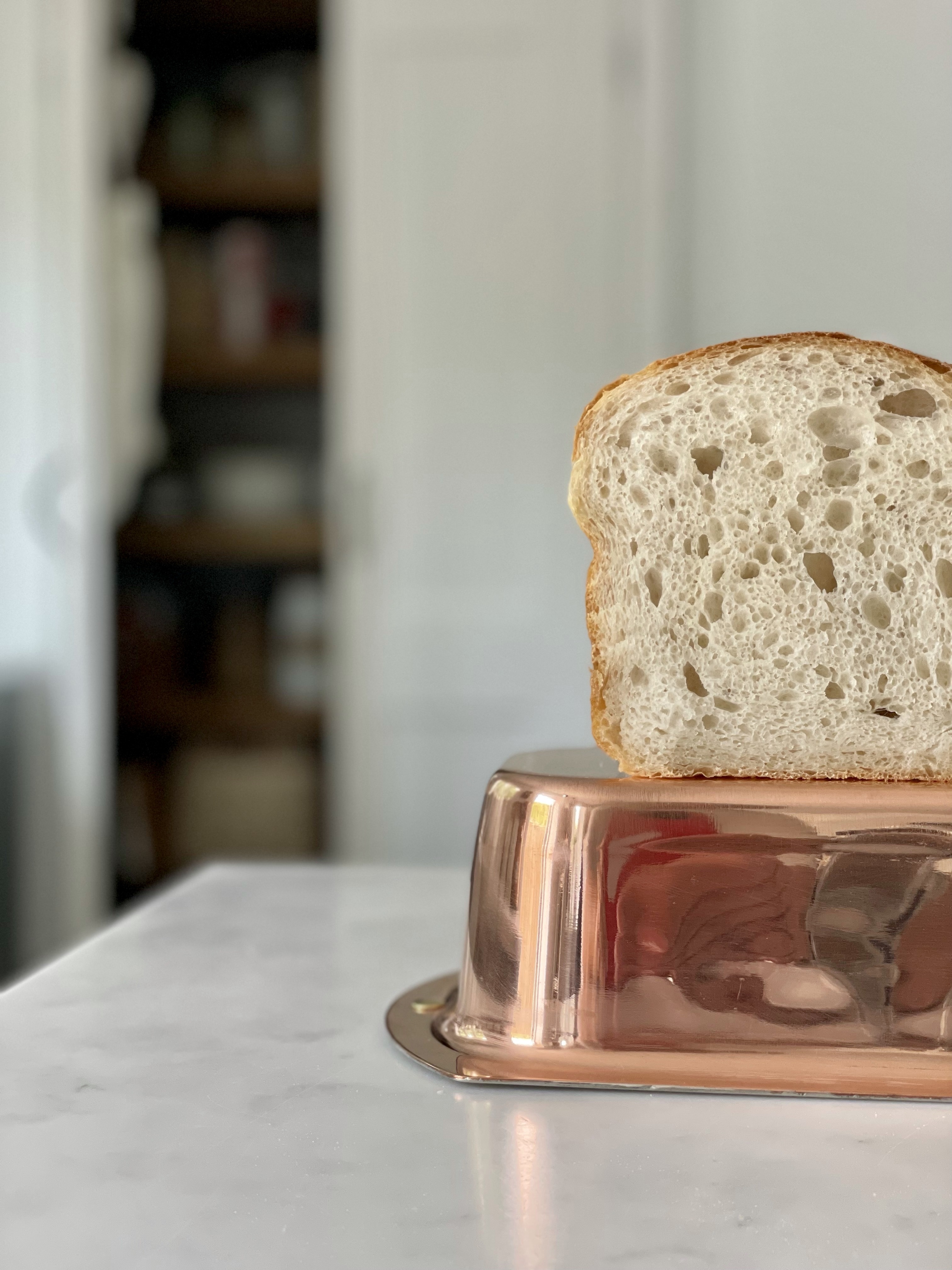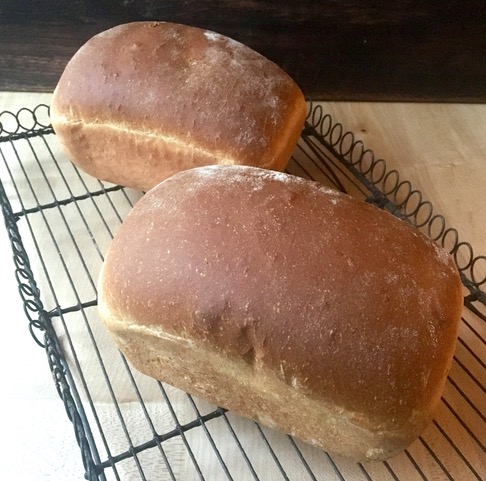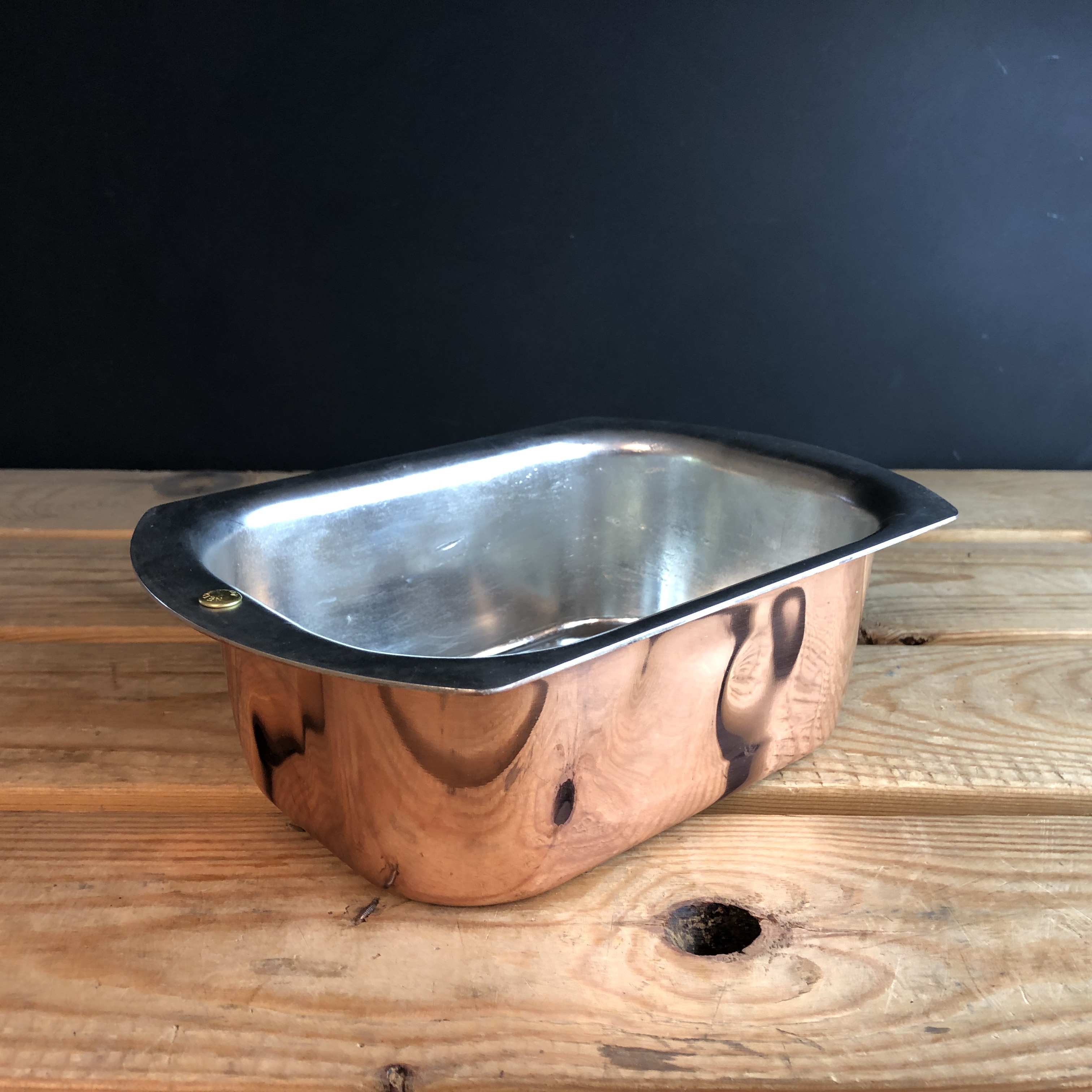Netherton Foundry would like to introduce you to baker, Marie Lester
Marie is the founder of The English Pantry, a great website resource for the home baker which includes recipes, ideas and equipment.
She has lots of baking knowledge and recently created the recipes for the book 'Vintage Breadboards' and has made films on how to bake sourdough for Sharpham Park, the home of British spelt.
Netherton Foundry got to know Marie as she is a great enthusiast for copper bakeware. In fact she was one of the very first bakers to use our 1lb Shropshire made tin lined copper loaf tin.
This month, she has very kindly shared with us her recipe for a traditional white tin loaf (with a syrupy twist) made using yeast. This is an ideal recipe for our copper loaf tin.

Over to Marie...........
"Hello everyone! I'm a home baker - a working woman who loves baking for my husband, friends and neighbours.
I began baking a few year ago - starting with a rye bread. It was a disaster as I didn't know there was a difference between active and dried yeast. The resulting rye missile was catapulted straight into the bin! Happily the story doesn't end there!
I quickly got up the baking learning curve and started producing cottage loaves, sourdough breads, tin loaves, brioches - to name a few. Along the way, I have developed a number of great recipes which have been tested by the Instagram baking community - a phenomenon created by the 2020 lockdown.
Through my 1-1 sourdough-alongs (remote parallel baking) and face-to-face workshop, I have advised and taught home bakers in the UK and internationally who wish to make good bread.
I like to use the best equipment available. Copper is my favourite material for pans and baking tins. It is highly effective (essential to me): conducting heat well and evenly which ensures an even bake. When I discovered this copper tin, I knew would be perfect for my brioches and tin loaves."
A freshly-baked loaf of bread is a treat in any household. This recipe is for a white loaf of bread - much maligned in recent years. But when you make it yourself, you choose exactly what goes into it. No preservatives; no environmentally-damaging palm oil; no emulsifiers; no reducing agent; no soya flour, no chlorine dioxide (bleach!) and no hydrogenated or fractionated fats. Just good wholesome ingredients. And this recipe uses fresh or dried yeast so you can bake it any time.

Ingredients for 2 x 1lb loaves:
Step 1
50 ml lukewarm (90-100°F / 32-38°C) water
15 g fresh yeast (or 7.5 g active dry yeast or 5 g instant dry yeast)
15 g fresh yeast (or 7.5 g active dry yeast or 5 g instant dry yeast)
Step 2
250 ml milk
60 g unsalted butter
50 ml maple syrup
1 egg (55g)
60 g unsalted butter
50 ml maple syrup
1 egg (55g)
Step 3
500 g strong white bread flour (I used 435 g Canadian Manitoba bread flour and 115g stoneground white wheat flour)
2 tsp salt (8g)
500 g strong white bread flour (I used 435 g Canadian Manitoba bread flour and 115g stoneground white wheat flour)
2 tsp salt (8g)
1-2 tsp light olive oil to coat the mixing bowl
Butter for greasing the loaf tins
Semolina for dusting thetop of the dough
Process:
In a small mixing bowl, crumble the fresh yeast into the water. Mix in 1 teaspoon of flour and 1 teaspoon of sugar (to feed it). Allow to stand until the mixture thickens and bubbles are visible on the surface.
If using active or instant dry yeast, follow the instructions on the packet.
Heat the milk, butter and maple syrup gently in a saucepan until the butter has melted. Pour into a small mixing bowl and allow to cool until it is lukewarm. (90-100ºF/32-38ºC)
Once it has reached lukewarm temperature, add the yeasty liquid and stir together. Then whisk in the egg.
Weigh the flours and salt into the bowl of a kitchen mixer and stir together. Attach the dough hook and turn on to a low setting (Kitchenaid 2). Slowly pour in the liquid and mix until a dough starts to form.. With the speed set at 2, mix for 8-10 minutes until the dough forms a ball and pulls away from the sides of the bowl. With wet fingers, try to gently stretch out a piece of dough into a panel. It should hold together without tearing easily.
Once it has reached lukewarm temperature, add the yeasty liquid and stir together. Then whisk in the egg.
Weigh the flours and salt into the bowl of a kitchen mixer and stir together. Attach the dough hook and turn on to a low setting (Kitchenaid 2). Slowly pour in the liquid and mix until a dough starts to form.. With the speed set at 2, mix for 8-10 minutes until the dough forms a ball and pulls away from the sides of the bowl. With wet fingers, try to gently stretch out a piece of dough into a panel. It should hold together without tearing easily.
TIP: Different flours absorb liquid differently. if the dough looks too wet or too dry, add a small amount of flour or liquid until the dough comes together.
Using your dough cutter turn the mixture onto a lightly -floured surface, and knead by hand for a couple of minues until the dough is smooth and elastic. Shape it into a ball, place in a large lightly oiled bowl and cover with a damp cloth. Leave to rise in a warm place for 1-2 hours, or until the dough has doubled in size.
Shaping the dough:
Turn the dough out ont a lightly floured surface. Divide into two pieces with your dough cutter. Shape each piece into a ball and rest for 15 minutes.
Taking each piece in turn, flatten the dough into a rectangle using the flat of your hand or a rolling pin. Fold the top corners of the dough over on itself and then roll into a log and seal the dough by pressing the dough edges together between your fingertips. Place into a greased 0.5kg/1lb loaf tin, positioning the seams at the bottom and tucking the ends underneath. Repeat with the second piece of dough.
Cover both tins with a slightly damp cloth and leave to rise for another 60-90 minutes until well-risen (the dough should reach the top of the tin). When they are risen, remove and finish the last part of the proofing on your kichen counter.
Meanwhile heat the oven to 170°C / 340°F/ Gas 3
NOTE: the copper tins conduct heat very well so you don't need the oven as hot as ordinary loaf tins..
Place a roasting dish on the bottom rack of the oven. Boil a kettle of water.
Place a roasting dish on the bottom rack of the oven. Boil a kettle of water.
Lightly dust the top of the dough with semolina or flour and score simply if you wish (this is optional)
Place the tins in the oven above the tray. Pour the freshly boiled water into the roasting tray. bake for 15-20 minutes then remove the tray of water. Bake the loaves for a further 15 minutes until they look golden brown on all sides and sound hollow ehen tapped underneath.
Turn the oven off , remove the loaves from their tins and place in the oven with the door ajar for 30 minues to cure. Remove and finish cooling on a wire rack for another 30 minutes.
You can follow Marie on Instagram @marierlester


Netherton Foundry, Shropshire, England. A family business crafting traditional cookware in Highley, Shropshire from iron, oak and copper,using materials predominantly sourced in our own and neighbouring counties. Copyright 2021.











